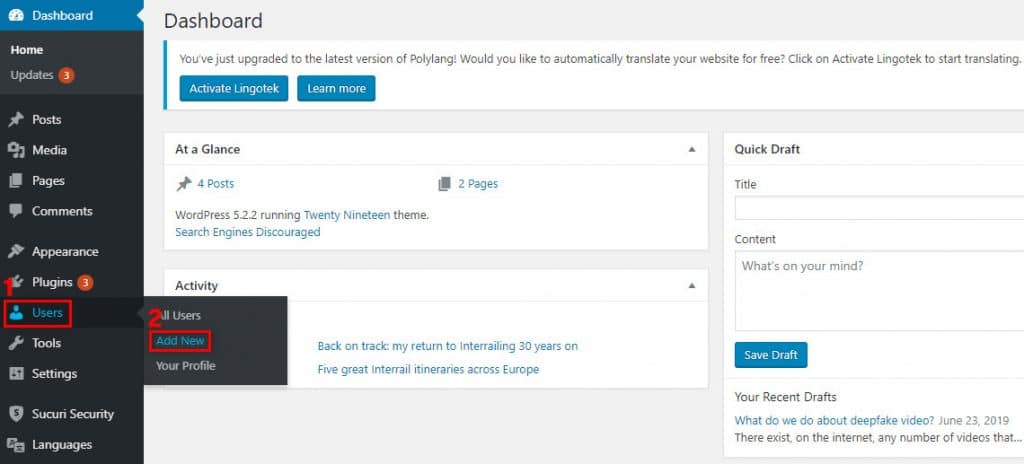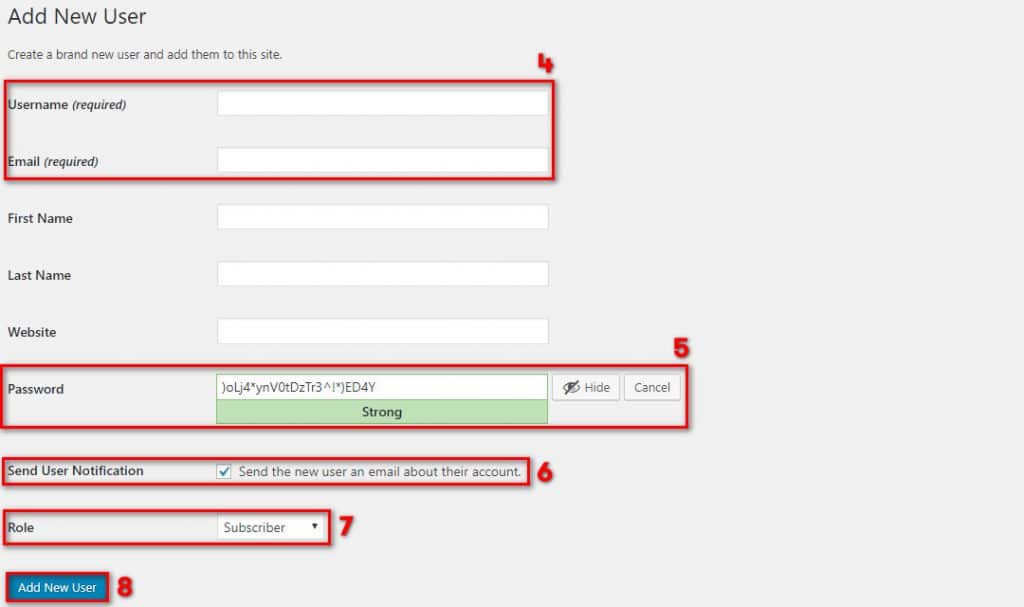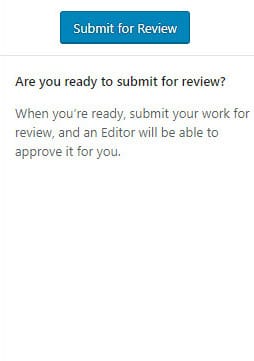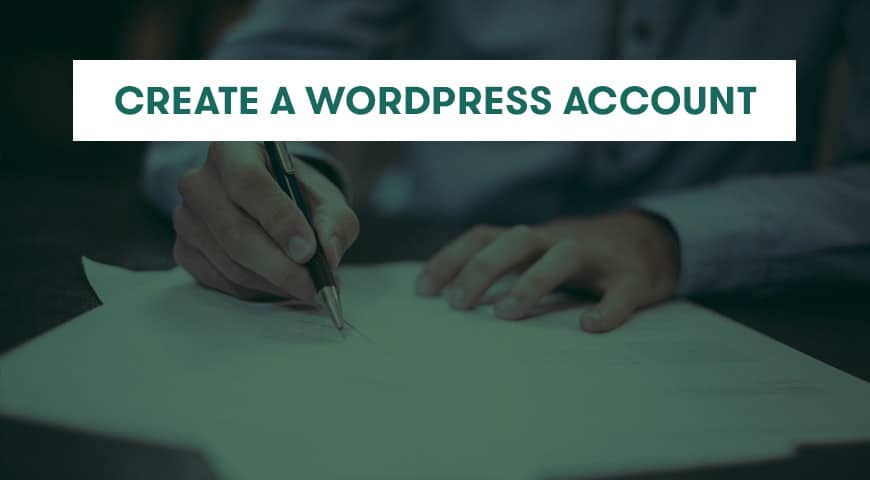Websites that are created using WordPress, allow users to create accounts and use the WordPress dashboard with different permissions and roles. By creating a new WordPress account, you can give your authors and administrators different roles and let users have their own profiles.
Websites that run on the basis of user registration need to allow their users to create an account and assign them different roles so they can operate on the website.
A user can be admin, editor, author, or contributor. You can also add new roles to your website. WordPress allows you to create a customized dashboard for your users.
How to Create a WordPress Account?
To create a new account in WordPress you must follow these steps:
1. First, you need to go to your admin dashboard. If you have forgotten your login password, simply click on “Lost Password” to reset or retrieve your password.


2. When you are in your WordPress dashboard, click on the “User” tab.
3. Then click on “Add New”.
4. You will be redirected to the page where you can create a new account. Enter the username and email address in their respected fields. The first name, last name, and website are optional. You can leave them blank.
5. Next step, you will have to choose a password. You can use the WordPress password generator to generate a new password, or just manually enter a password. It is recommended that you use at least one uppercase, lowercase, special characters and number in your password to prevent getting hacked.


6. If you wish to notify the user that you have created an account for them. Make sure you tick the option.
7. In the next step, you have to assign a role to the user. By default, WordPress selects admin for new users, and they can have access to every part of your website. You can change the role to the editor, author, contributor, subscriber or you can create your own roles.
8. Finally, click on add and save.
What are WordPress User Roles?
As mentioned above, when you create a new account you have to set a role for them. A user role can give the user different permissions to access your settings. By default WordPress has created 5 main roles:


Administrator
The administrator role is the most powerful role you can give to anyone. An admin can access your posts, comments, plugins, pages, settings, tools, users and etc. they can delete everything without any restrictions. Install or delete themes. Therefore, you must assign an admin to your trusted users.
Editor
The editor role has less access compared to admin. They can only edit your posts, pages, delete or publish, manage categories, tags, links and upload images and files.
The editor can manage your content but they cannot add or install plugins or themes.
Author
The author’s role has less permission and as you probably can tell by the name of it, they can only write for your website. They can only edit posts, publish or delete them. They also can upload files and images.
The author can make changes to the content they have written and they don’t have access to your other content. They don’t have access to any of your settings and therefore, they can’t make any changes to the core of your website.


Contributor
Contributor is another role in WordPress. They can only write and edit their posts, but they cannot publish them.
They can create a post to be reviewed. They don’t have access to any of your settings and can’t create a new category. They can only add tags to their posts. They can’t even upload any files.
Subscriber
Subscribers don’t have access to settings, posts, plugins, etc. they can only submit comments and update their profile.



